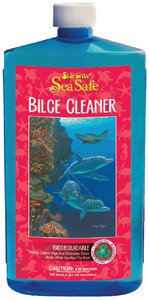The bilge pump is a modest little device that is taken for granted until called upon to fight off the effects of water in places it should not be. This small plastic pump lives a hard life buried in the darkest confines of the boat fighting off rising water and debris with infrequent attention from most boat operators. In reality, your bilge pump should be treated with as much attention and regard as the main engine(s) because when other systems fail, its primary job is to keep you afloat.
Depending on the size and construction of a vessel, there may be more than one pump on board, so consult your manufacturer or dealer for specifics if you are unsure of the number of pumps or their location.
Shop Recommended Bilge Care Products
Keeping bilge areas free of debris will lessen the likelihood of a float switch becoming stuck and the pump running until it flattens a battery or burns out. This can be especially problematic for new boats as debris from the initial build process is often trapped inside the hull until the boat goes into use.
With a clean bilge cavity, water is free to travel to the pump and be discharged overboard. Periodically inspect the pump and activate the float switch by hand to assure it is working as intended. If the float switch is internal, washing out this area of your boat will allow the pump to activate and thereby test its readiness. You might also have an override switch on the dashboard that lets you manually turn it on. This is also a perfect opportunity to assure that the overboard discharge hose is free from defects and secured with hose clamps on both ends.
For boats with plastic thru-hull fittings, look for cracking or dry rot on the fitting itself as they can easily break away and leave the bilge discharge hose hanging inside the hull. A working bilge pump is still worthless unless the water has a clear path overboard.
Free your bilge of oil
Chances are that if your boat is more than a few months old, your bilge area is likely home to a few foul odors, mold, and mildew. The good news is that these areas are very easy to clean up with very little effort. Step one is to have a good look and identify any oil or oily residue that might be in the bilge. Use an oil absorbent pad or sock to capture the oil before starting any cleanup work as the discharge of oil or oily water overboard is strictly prohibited. At this point, you may want to find the source of that oil as well, as this is usually indicative of another problem.
Clean bilge

Once the bilge is oil-free, begin by adding some freshwater - maybe 1-2" in total. Introducing large amounts of water will likely cause your automatic bilge pump to activate, so only a small amount of water is required as the rest will be pumped out anyway. Biodegradable bilge cleaning products are perfect for this application. Simply add some cleaner to the standing water and agitate slightly with a hose or brush. This sudsy mix will literally eat that nasty residue from your bilge area without a bunch of elbow grease.
Follow the manufacturer's recommendations for letting the product sit a few hours and then go run your boat. Moving the boat through the waves as well as on and off of a plane will cause the cleaning product to reach the full length of the bilge and clean up some areas you could not otherwise see. At the end of the day, activate the pump and fully rinse the bilge with plenty of fresh water. Leaving a few hatches open to allow the area to air out will also do wonders.
Give your boat a once over
A few hours into your day and your bilge is clean and dry. This is a perfect time to run all the equipment on the boat and check for any leaks. Boaters with inboard engines are especially susceptible to problems here, but livewells, pumps, and cabin plumbing can all contribute water to the bilge area if not operating properly. By flipping a few switches while at the dock and monitoring the water level in the bilge area, boat owners can quickly identify any sources of additional water inside the boat. This also provides a perfect opportunity to inventory any pumps, lights or switches that are not operating as intended and mark them for future repair. While you are at it, drain and flush your freshwater tank if you can't remember the last time this was done. The next person to use your shower or sink will thank you!
Shop PartsVu for all of the parts and products you need for bilge care, as well as other boating essentials.













2 comments
We’re glad it helped!!
I don’t know how to maintenance the bilge pump. This article helps me to get an idea. Thanks for sharing it.